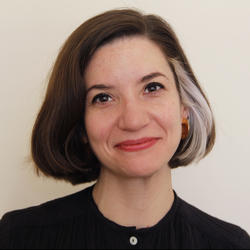Persephone Allen

Persephone Allen (she/her) is a design historian, curator, cultural producer and educator based in Providence, RI. With an interdisciplinary background in museum programming, design history and education, she brings an engaged approach to interpreting 20th-century design and visual and material culture, and activating art museum collections. Her courses are designed to encourage close looking, open discussion and approaching art, design and meaning-making through multiple perspectives. Her teaching, programming and research are rooted in a commitment to equity, access and collaboration.
Prior to RISD, she held positions as director of public programs at the Isabella Stewart Gardner Museum in Boston, curator of programs and engagement at the American Folk Art Museum in New York and assistant museum educator for lectures and programs at the Frick Collection in New York. She has also held positions in education, curating and programming at Mason Gross School of the Arts at Rutgers University in New Brunswick, NJ; the Victoria and Albert Museum in London; the Bard Graduate Center Gallery in New York; and the Rhode Island Council for the Humanities in Providence. Her writing has appeared in gallery exhibitions throughout New England and her essay The Metallic Sphere as Mechanical Eye: Reflected Identities at the Bauhaus was published in Dust & Data: Bauhaus Trajectories in One Hundred Years of Modernism (2019). She holds an MA in History from the University of Edinburgh and an MA in Design History, Decorative Arts and Material Culture from the Bard Graduate Center (BGC), and she is a 2023 alumna of the National Art Education Association School for Art Leaders.